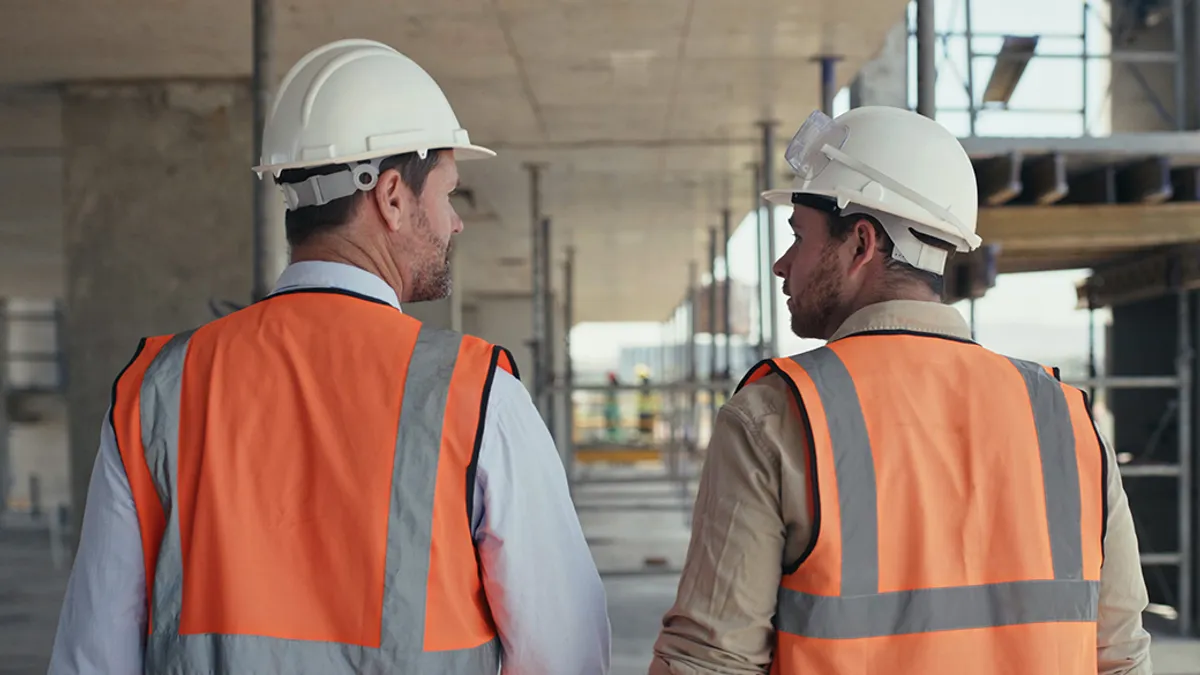It’s a familiar sight: Workers clustered together on a job site, with hard hats and safety vests clearly visible. This image showcases a laudable commitment to the physical safety of its workforce, a necessary aspect of any construction company.
Construction workers wear Personal Protective Equipment (PPE) daily, but protecting mental health alongside physical health is equally important. Sadly, construction workers have among the highest suicide rates by population. With staggering mental illness and suicide rates in construction reported across regions including the U.S., U.K. and Australia, it’s clear that improving working conditions and addressing mental health is critical. In the U.S. alone, men working in construction are four times more likely to die by suicide than the general population.
In an industry where stoicism and a reluctance to ask for help are common, it’s essential for construction leaders to actively work to remove the stigma around mental illness and advocate for their employees’ psychological and physical well-being. Efforts like Get Construction Talking, championed by Procore and The B1M, are an example of how some organizations are helping to break down the stigma associated with mental health challenges and bolster the efforts of charities committed to improving mental wellness in construction.
Launched in London in June, Get Construction Talking aims to empower everyone in construction with the tools to look out for their colleagues, by starting with a conversation. The program is also collecting funds to raise $1 million to donate to construction-based mental health non-profits around the world like The Lighthouse Charity; Construction Sport; The Construction Industry Alliance for Suicide Prevention; Mates in Mind; and Mates in Construction.
While the construction industry is one of enormous physical labor, including significant physical stress, mental health is being elevated on the job site – modern safety programs are approaching safety as a holistic issue, mind, body and spirit.
Change Starts with a Chat
Creating a holistic safety program that focuses on mental and physical well-being means going beyond standard physical safety practices. And while combating negative attitudes toward mental illness may seem daunting, conscientious leaders have the power to influence positive change in their industry.
Here are three strategies for cultivating a workplace dedicated to safety and wellness.
1. Start the conversation.
Increasing communication and visibility around mental health issues can go a long way to reducing stigma and creating an inclusive environment. For leaders looking to address the issue of mental well-being, talking about it openly goes a long way. Including recurring mental health training and policies in safety meetings are one way to ensure mental health is at the forefront of the safety conversation.
2. Check on your teams.
Research indicates that acknowledging and talking about mental health can actually improve it. This can be seen through successful efforts such as the Australian program, R U OK? In a free, downloadable toolkit, Get Construction Talking outlines signs to look for in colleagues who may be struggling with mental health, along with conversation starters. Simple statements can have a big impact:
- I haven’t seen you lately. Is everything OK?
- I know things have been tough – I’m here if you want to talk.
- It’s been a while, want to grab a cup of coffee?
3. Create a supportive culture.
Sometimes there are no visible signs of the struggle happening inside. However, leaders and team members have an opportunity to create a culture where it’s OK to not be OK. When talking about mental health, active listening and encouraging professional help can make a difference in the next actions people take.
Keeping people safe is more than just the right protection and equipment; it’s also about workers’ well-being. As business leaders and companies enact positive changes for employee mental health, the construction industry will become safer and more inclusive. To learn more about how you can help tackle this crisis and get access to a free, downloadable toolkit, visit www.getconstructiontalking.org.






